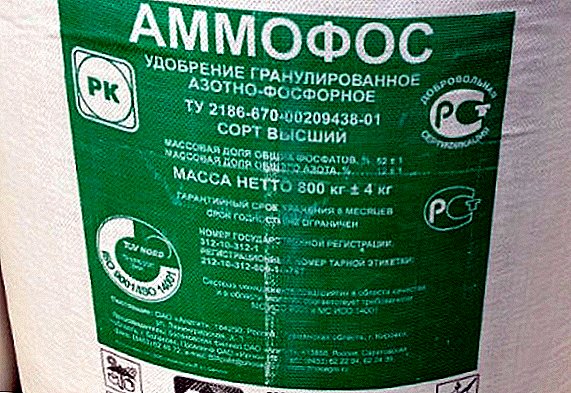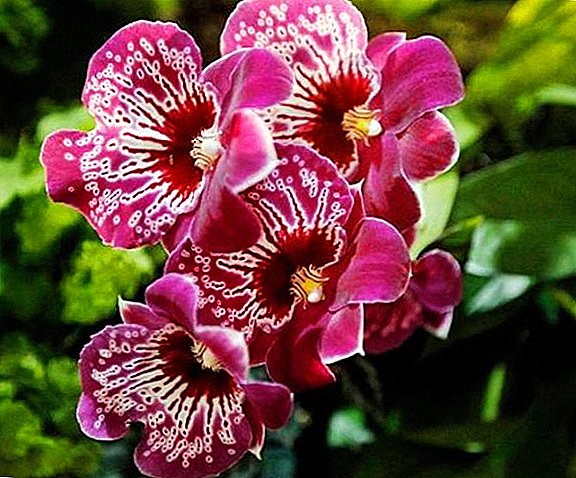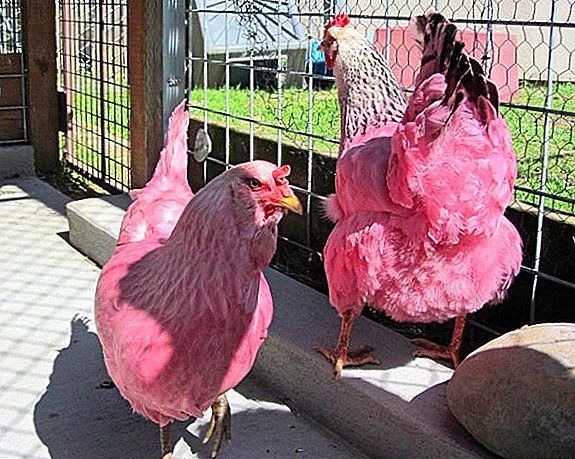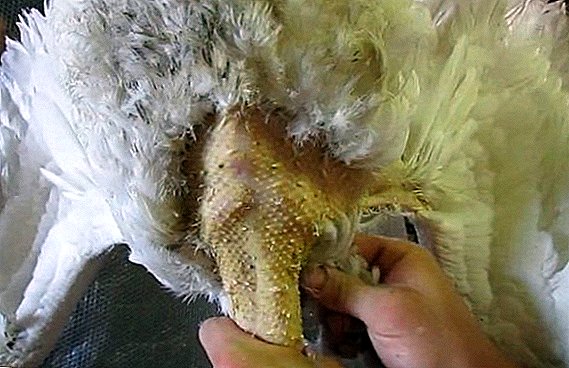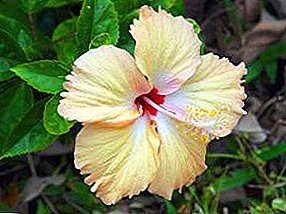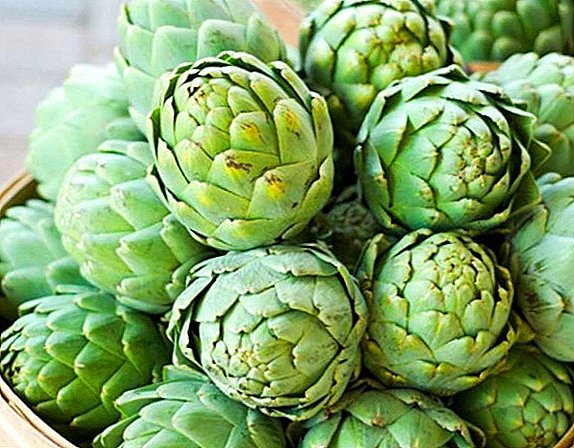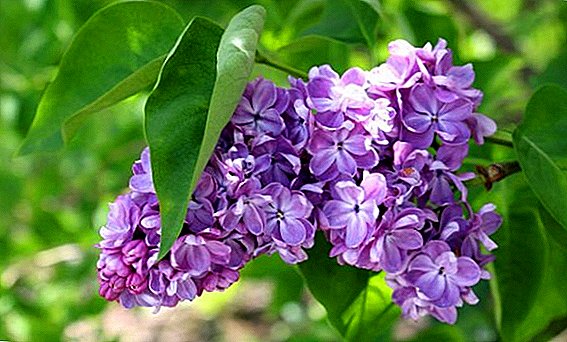 Lilac is the favorite of many gardeners, as with proper care it is capable of pleasing the eye with its bright and lush flowering. The lilac color palette can be either light violet or dark violet with white veins. Moreover, the flowers of lilac are white. But what if the lilac does not bloom? The reasons for this failure in the processes of growth and development of the bush, we will understand in this article.
Lilac is the favorite of many gardeners, as with proper care it is capable of pleasing the eye with its bright and lush flowering. The lilac color palette can be either light violet or dark violet with white veins. Moreover, the flowers of lilac are white. But what if the lilac does not bloom? The reasons for this failure in the processes of growth and development of the bush, we will understand in this article.
Selection of seedlings
It is necessary to choose planting material with special care, since it will depend on him how many years your lilac will bloom.
To date, there are many ways to breed this lush shrub, but the most common way is microclonal reproduction.  This method involves the separation from the parent bush top. Further, professional gardeners rooted the top and spread in the markets.
This method involves the separation from the parent bush top. Further, professional gardeners rooted the top and spread in the markets.
The microclonal method of reproduction is rather complicated, but at the same time, entrepreneurs love it very much, since with this type of reproduction it is possible to obtain a large number of copies in a minimum time.  But there is a problem for the consumer. People who buy microclonal saplings often ask questions about why lilac does not bloom if it is already 3 years old or more.
But there is a problem for the consumer. People who buy microclonal saplings often ask questions about why lilac does not bloom if it is already 3 years old or more.
The fact is that such shoots may bloom for the first time only in the fifth or sixth year of life, therefore it is better not to buy them.
Important! Lilac shoots can be transplanted only 2-3 weeks after the end of flowering.The best seedling will be grafted lilac, which will begin to bloom in the second or third year after planting. Experts say that common lilac (grafted) will be the best planting material /
 Such a shrub can normally grow, grow and bloom for decades. Try to buy planting material only from trusted vendors who have authentic documentation, etc.
Such a shrub can normally grow, grow and bloom for decades. Try to buy planting material only from trusted vendors who have authentic documentation, etc.Sometimes the reason that the lilac does not bloom can be the wrong planting technology. That is why experienced gardeners devote a lot of time to planting and prepare for it in advance.
Need to choose the right landing site.: well lit by sunlight, protected from drafts and groundwater.
The landing pit needs to be properly processed: its depth should be 40-50 cm, drainage should be done at the bottom (a layer of fine crushed stone with a thickness of 7-10 cm).  In addition, take care of fertilizers, which should be the optimal amount - 30 g of superphosphate, 20 kg of humus and 300 g of wood ash. Especially careful to be with nitrogenous fertilizers (we will tell about it a little below).
In addition, take care of fertilizers, which should be the optimal amount - 30 g of superphosphate, 20 kg of humus and 300 g of wood ash. Especially careful to be with nitrogenous fertilizers (we will tell about it a little below).
Soil type
One of the main reasons why lilac stops blooming is the wrong type of soil. It should be noted that this shrub will not be able to normally grow and bloom every year if it is planted on heavy clay soil.
Lilac loves the dry type of soil with moderate acidity (6.5-7.5 pH) and mediocre humidity. It should not be planted in this plant in highly marshy, heavy or waterlogged soil types.  Groundwater level at the landing site should be no higher than 1.6 m. The place where lilac grows should not be submerged during periods of melting snow and high rainfall.
Groundwater level at the landing site should be no higher than 1.6 m. The place where lilac grows should not be submerged during periods of melting snow and high rainfall.
The soil for planting should be dry, with an optimal amount of macro and micronutrients. It will be good if, before planting, you pass the ground from the landing site to the laboratory.
Professionals should establish the level of all necessary minerals in the soil. According to the result of the examination, you will be able to draw conclusions about which elements are in surplus and which are in short supply.  And if there is no suitable type of soil in your area, then it is better to remove the soil layer (square meter to a depth of 50 cm) and fill in a land suitable for lilac with all the necessary minerals.
And if there is no suitable type of soil in your area, then it is better to remove the soil layer (square meter to a depth of 50 cm) and fill in a land suitable for lilac with all the necessary minerals.
In such conditions, with proper care and with regular dressings, the shrub will bloom for many years.
Insufficient lighting
If this lush shrub will not receive enough sunlight in the spring-summer period, then it may not flowering.
Lilac should receive a large amount of solar energy at the moment when it begins to bloom.  Therefore, the best place on the site for landing lilacs will be the western or eastern side. It should be noted that in the south of the shrub is better not to plant, as the scorching rays of the sun can cause the young shoots of lilac to dry.
Therefore, the best place on the site for landing lilacs will be the western or eastern side. It should be noted that in the south of the shrub is better not to plant, as the scorching rays of the sun can cause the young shoots of lilac to dry.
Did you know? In England, there is a tradition: if the bride refuses the bridegroom's offer, then she is obliged to hand a bouquet of lilacs to a desperate guy.A bad place for normal growth and flowering of shrubs is the area where spruces and pines grow. They are evergreens and create a lot of shade, so the lilacs may not bloom at all.
Also try not to plant a shrub in a dense garden or between densely standing buildings that create regular shade.
You will be interested to get acquainted with the peculiarities of cultivation of Hungarian and Persian lilacs.
Feed errors
If you follow the wrong technology feeding lilac bush, the flowering process can not wait. A lush crown, large shrub size, enlarged leaves and many young shoots are the first signs that there is an excess of trace elements in the soil.  Nitrogen provokes the accelerated growth of plant tissues, while the lilac will increase in growth and spend all the useful substances for the development of new shoots and leaves, and the flowering process will be absent.
Nitrogen provokes the accelerated growth of plant tissues, while the lilac will increase in growth and spend all the useful substances for the development of new shoots and leaves, and the flowering process will be absent.
In such cases, you need to stop feeding the soil with nitrogenous fertilizers. Bring urea and ammonium nitrate only once every 2-3 years.
Find out what makes urea and ammonium nitrate different and what is best to use.If you have data on the analysis of your soil, then analyze it and draw the appropriate conclusions. With a large excess of nitrogen in the soil it is necessary to improve its quality. You can carefully remove the top layer of soil and replace it with a soil that is poor in nitrogen but rich in superphosphate. In addition, it should be noted that if the soil has a surplus of nitrogen, it is prohibited to feed the plant with humus, chernozem or rotted manure (in these fertilizers there is also a proportion of nitrogenous trace elements).
Pruning
For a normal flowering process, the lilac bush should be regularly cut and rejuvenated. If this is not done, then, as in the case of nitrogenous fertilizers, the shrub will acquire large sizes, and it simply will not have enough minerals for the flowering process.  In addition, an incorrectly pruned (or not pruned at all) lilac bush looks feral and ugly, there is no harmony and pomp in it.
In addition, an incorrectly pruned (or not pruned at all) lilac bush looks feral and ugly, there is no harmony and pomp in it.
We recommend to learn how to make the cut lilac longer stored.It is necessary to cut the bush in early spring, even before the first buds begin to bloom. To form a shrub can be two main methods: a bush (ball) or a tree.
To form a bush in the shape of a ball, all shoots should be cut at a height of 12-15 cm from the first bud.  After 3-4 years you need to remove all the shoots and leave 10-12 lignified branches, which in a short period of time will give a large number of new shoots - bright and lush blooming.
After 3-4 years you need to remove all the shoots and leave 10-12 lignified branches, which in a short period of time will give a large number of new shoots - bright and lush blooming.
Important! Immediately after the lilac flowering process is over, remove all dried shoots. If this is not done, the process of seed formation will begin, which will weaken the plant.
In order to form a lilac shrub in the form of a tree (also called this type of bouquet), it is necessary to remove all the shoots from large branches, leaving only one, the largest shoot.  About 5-6 rows of buds are left on this shoot, and the rest is removed. In addition, do not forget to regularly dig out of the ground and remove the root shoots.
About 5-6 rows of buds are left on this shoot, and the rest is removed. In addition, do not forget to regularly dig out of the ground and remove the root shoots.
After their removal, the soil around the bush is dug to a depth of 7-10 cm. The process of pruning a lilac bush is of paramount importance, as a well-groomed and trimmed bush will annually delight you with its lush flowering.
Diseases and pests
The lilac struck by various diseases will not bloom, and this is a fact. Indeed, in the process of defeating a bush by pests, the normal metabolism is disturbed, therefore the leaves start to dry and curl.  In addition, you can see the dried and twisted inflorescences, which are the first sign of damage to the lilac bush. Usually lilac blooms for 2-3 years after planting, but only if the gardener properly cares for her. However, no matter what disease the shrub is affected, this can be immediately noticed.
In addition, you can see the dried and twisted inflorescences, which are the first sign of damage to the lilac bush. Usually lilac blooms for 2-3 years after planting, but only if the gardener properly cares for her. However, no matter what disease the shrub is affected, this can be immediately noticed.
The most common lilac diseases are:
- Panicles (refers to microplasma diseases).
- Fungal infections: powdery mildew (white spots on the leaves), phyllostiktosis (brown spots appear on the bush), bacterial rot (affects young shoots, as a result of which they begin to rot), heterosporia (holes appear on the leaves), etc.
- Viral diseases: ring spot or mottled, chlorotic leaf spot.
 If you saw on your lilac bush any of the signs of the above diseases, then know that the shrub most likely does not bloom because of pathogenic microorganisms. But besides them, lilac bush can be attacked by larger insects:
If you saw on your lilac bush any of the signs of the above diseases, then know that the shrub most likely does not bloom because of pathogenic microorganisms. But besides them, lilac bush can be attacked by larger insects:- Rosy cicadas;
- acacia spatula;
- leaf weevil;
- lilac tick;
- mole mottled.
 To protect the shrub from viral lesions will help such means: "Spark", "Aktara", "Fufanon", etc. Spraying the bush for the purpose of prevention is carried out before the start of flowering.
To protect the shrub from viral lesions will help such means: "Spark", "Aktara", "Fufanon", etc. Spraying the bush for the purpose of prevention is carried out before the start of flowering.Lilac must be processed twice, relying on the instructions for use of the drug. The second treatment should be 5-7 days after the first.
Did you know? Some of the varieties of lilac bush are able to tolerate frosts down to -60 ° С.Effective means in the fight against fungal lesions are: solution of copper or iron vitriol, copper oxychloride, Bordeaux liquid, etc. Processing should be carried out before flowering or after the shrub has dropped all the leaves (late autumn).
Chlorium oxide copper can be treated immediately after flowering bush (carefully spray each of the leaves and shoots).
It should be noted that phosphorus-potassium fertilizers will increase the resistance of lilacs to viral diseases.No need to despair if this year the lilac did not please you with lush and fragrant flowering, because you need to learn from your mistakes. Carefully read all the reasons given in this article why lilac did not bloom, eliminate them, and next year your shrub will surely give lush flower stalks. [/ video]


